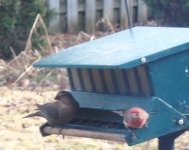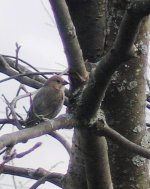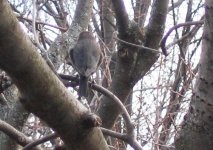This inconspicuous bird showed up at our feeder in Mid-April. My wife says it is grey, I say brown. Its the colour of the bark on the mountain ash in the photos. It is bigger than a house finch, with no evident markings. Its black toes seem to be extraordinarily long. It was eating sunflower seeds. Beverley saw it the day before, sitting in the sun on the patio, motionless for several minutes. I don't have any idea what it is, do you?
Randall.
Randall.







